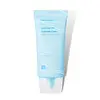What's inside
What's inside
 Key Ingredients
Key Ingredients

 Benefits
Benefits

 Concerns
Concerns

 Ingredients Side-by-side
Ingredients Side-by-side

Water
Skin ConditioningButylene Glycol
HumectantGlycerin
HumectantCaprylic/Capric Triglyceride
MaskingButyrospermum Parkii Butter
Skin ConditioningPolyglyceryl-10 Distearate
EmulsifyingStearyl Alcohol
EmollientCetyl Alcohol
EmollientGlyceryl Stearate
EmollientStearic Acid
Cleansing1,2-Hexanediol
Skin ConditioningPhenyl Trimethicone
Skin ConditioningCeramide NP
Skin ConditioningCaprylyl Glycol
EmollientAcrylates/C10-30 Alkyl Acrylate Crosspolymer
Emulsion StabilisingArginine
MaskingPhytosterols
Skin ConditioningDisodium EDTA
Sodium Hyaluronate
HumectantPolyphosphorylcholine Glycol Acrylate
Beta-Glucan
Skin ConditioningAsiatic Acid
Skin ConditioningAsiaticoside
AntioxidantMadecassic Acid
Skin ConditioningCitrus Aurantium Bergamia Fruit Oil
MaskingLimonene
PerfumingLinalool
PerfumingWater, Butylene Glycol, Glycerin, Caprylic/Capric Triglyceride, Butyrospermum Parkii Butter, Polyglyceryl-10 Distearate, Stearyl Alcohol, Cetyl Alcohol, Glyceryl Stearate, Stearic Acid, 1,2-Hexanediol, Phenyl Trimethicone, Ceramide NP, Caprylyl Glycol, Acrylates/C10-30 Alkyl Acrylate Crosspolymer, Arginine, Phytosterols, Disodium EDTA, Sodium Hyaluronate, Polyphosphorylcholine Glycol Acrylate, Beta-Glucan, Asiatic Acid, Asiaticoside, Madecassic Acid, Citrus Aurantium Bergamia Fruit Oil, Limonene, Linalool
Water
Skin ConditioningCentella Asiatica Extract
CleansingButylene Glycol
HumectantGlycerin
HumectantDipropylene Glycol
HumectantHydroxyacetophenone
AntioxidantAloe Barbadensis Leaf Extract
EmollientCarbomer
Emulsion StabilisingArginine
Masking1,2-Hexanediol
Skin ConditioningPropanediol
SolventPolyglyceryl-10 Laurate
Skin ConditioningAmmonium Acryloyldimethyltaurate/Vp Copolymer
Ethylhexylglycerin
Skin ConditioningDisodium EDTA
Maltodextrin
AbsorbentMelaleuca Alternifolia Leaf Oil
AntioxidantEucalyptus Globulus Leaf Oil
PerfumingBetaine
HumectantMelia Azadirachta Leaf Extract
Skin ConditioningXylitylglucoside
HumectantAnhydroxylitol
HumectantLimonene
PerfumingMelia Azadirachta Flower Extract
Skin ConditioningXylitol
HumectantMelaleuca Alternifolia Leaf Extract
PerfumingCamellia Sinensis Leaf Extract
AntimicrobialGlucose
HumectantHouttuynia Cordata Extract
Skin ConditioningBenzyl Glycol
SolventHydrolyzed Glycosaminoglycans
HumectantSodium Hyaluronate
HumectantSodium Hyaluronate Crosspolymer
HumectantHydrolyzed Hyaluronic Acid
HumectantHydroxypropyltrimonium Hyaluronate
Hyaluronic Acid
HumectantSodium Acetylated Hyaluronate
HumectantWater, Centella Asiatica Extract, Butylene Glycol, Glycerin, Dipropylene Glycol, Hydroxyacetophenone, Aloe Barbadensis Leaf Extract, Carbomer, Arginine, 1,2-Hexanediol, Propanediol, Polyglyceryl-10 Laurate, Ammonium Acryloyldimethyltaurate/Vp Copolymer, Ethylhexylglycerin, Disodium EDTA, Maltodextrin, Melaleuca Alternifolia Leaf Oil, Eucalyptus Globulus Leaf Oil, Betaine, Melia Azadirachta Leaf Extract, Xylitylglucoside, Anhydroxylitol, Limonene, Melia Azadirachta Flower Extract, Xylitol, Melaleuca Alternifolia Leaf Extract, Camellia Sinensis Leaf Extract, Glucose, Houttuynia Cordata Extract, Benzyl Glycol, Hydrolyzed Glycosaminoglycans, Sodium Hyaluronate, Sodium Hyaluronate Crosspolymer, Hydrolyzed Hyaluronic Acid, Hydroxypropyltrimonium Hyaluronate, Hyaluronic Acid, Sodium Acetylated Hyaluronate
Ingredients Explained
These ingredients are found in both products.
Ingredients higher up in an ingredient list are typically present in a larger amount.
1,2-Hexanediol is a synthetic liquid and another multi-functional powerhouse.
It is a:
- Humectant, drawing moisture into the skin
- Emollient, helping to soften skin
- Solvent, dispersing and stabilizing formulas
- Preservative booster, enhancing the antimicrobial activity of other preservatives
Arginine is an amino acid that is important for human development. Your body uses is it to produce hair keratin and skin collagen.
As a cosmetic ingredient, Arginine has antioxidant properties and can also help repair damaged skin. This ingredient is derived either synthetically or from animals.
Arginine isn't fungal acne safe when used in the presence of other lipids (fats, fatty acids, oils, esters, etc). Oils and fats occur naturally within the skin, so take caution when using Arginine if you're prone to fungal acne.
Learn more about ArginineButylene Glycol (or BG) is used within cosmetic products for a few different reasons:
Overall, Butylene Glycol is a safe and well-rounded ingredient that works well with other ingredients.
Though this ingredient works well with most skin types, some people with sensitive skin may experience a reaction such as allergic rashes, closed comedones, or itchiness.
Learn more about Butylene GlycolDisodium EDTA plays a role in making products more stable by aiding other preservatives.
It is a chelating agent, meaning it neutralizes metal ions that may be found in a product.
Disodium EDTA is a salt of edetic acid and is found to be safe in cosmetic ingredients.
Learn more about Disodium EDTAGlycerin is already naturally found in your skin. It helps moisturize and protect your skin.
A study from 2016 found glycerin to be more effective as a humectant than AHAs and hyaluronic acid.
As a humectant, it helps the skin stay hydrated by pulling moisture to your skin. The low molecular weight of glycerin allows it to pull moisture into the deeper layers of your skin.
Hydrated skin improves your skin barrier; Your skin barrier helps protect against irritants and bacteria.
Glycerin has also been found to have antimicrobial and antiviral properties. Due to these properties, glycerin is often used in wound and burn treatments.
In cosmetics, glycerin is usually derived from plants such as soybean or palm. However, it can also be sourced from animals, such as tallow or animal fat.
This ingredient is organic, colorless, odorless, and non-toxic.
Glycerin is the name for this ingredient in American English. British English uses Glycerol/Glycerine.
Learn more about GlycerinLimonene is a fragrance that adds scent and taste to a formulation.
It's found in the peel oil of citrus fruits and other plants such as lavender and eucalyptus. The scent of limonene is generally described as "sweet citrus".
Limonene acts as an antioxidant, meaning it helps neutralize free radicals.
When exposed to air, oxidized limonene may sensitize the skin. Because of this, limonene is often avoided by people with sensitive skin.
The term 'fragrance' is not regulated in many countries. In many cases, it is up to the brand to define this term. For instance, many brands choose to label themselves as "fragrance-free" because they are not using synthetic fragrances. However, their products may still contain ingredients such as essential oils that are considered a fragrance.
Learn more about LimoneneSodium Hyaluronate is hyaluronic acid's salt form. It is commonly derived from the sodium salt of hyaluronic acid.
Like hyaluronic acid, it is great at holding water and acts as a humectant. This makes it a great skin hydrating ingredient.
Sodium Hyaluronate is naturally occurring in our bodies and is mostly found in eye fluid and joints.
These are some other common types of Hyaluronic Acid:
Learn more about Sodium HyaluronateWater. It's the most common cosmetic ingredient of all. You'll usually see it at the top of ingredient lists, meaning that it makes up the largest part of the product.
So why is it so popular? Water most often acts as a solvent - this means that it helps dissolve other ingredients into the formulation.
You'll also recognize water as that liquid we all need to stay alive. If you see this, drink a glass of water. Stay hydrated!
Learn more about Water